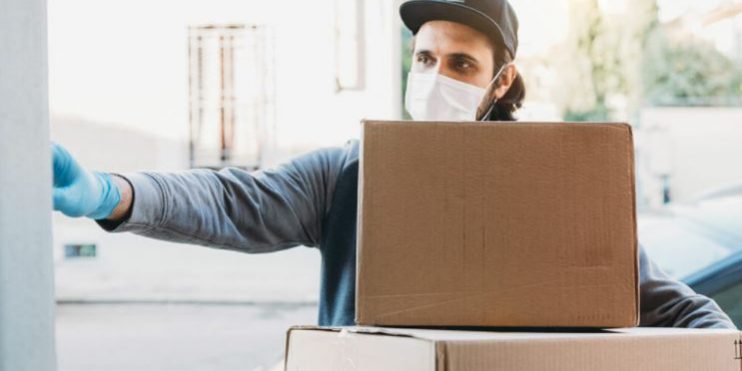Many people associate reverse logistics to simply cover returns, but it is much more broad than that. Beyond answering “what is reverse logistics,” it is important to understand the history of reverse logistics, the benefits of reverse logistics and why it’s a rising practice, especially in aftermarket industries. Meanwhile, reverse logistics is growing more complex.
What Is Reverse Logistics
Reverse logistics stands for all operations related to the reuse of products and materials. That can include all recycling, reclamation of raw materials, refurbishment, and reselling of items that have been restocked.
The reverse logistics process further includes the management and the sale of surplus as well as returned equipment and machines from the hardware leasing business.
Normally, logistics deal with events that bring the product towards the customer. In the case of reverse logistics, the resource goes at least one step back in the supply chain. For instance, goods move from the customer to the distributor or to the manufacturer
Any process or management after the sale of the product involves reverse logistics. If the product is defective, the customer would return the product. The manufacturing firm would then have to organize shipping of the defective product, testing the product, dismantling, repairing, recycling, or disposing of the product.
The same process could be used for reusing/reshipping produce and perishable goods to prevent spoilage if transportation is unavailable or otherwise challenging. For instance, at the height of the pandemic food spoilage was a big issue, but now, with an eye on full forward and reverse logistics, that waste can be rerouted to avoid spoilage and reduce total transport costs.
The product would travel in reverse (compared to traditional logistics) through the supply chain network to retain any use from the defective product. It’s the backwards flow of goods that gives rise to the name and best answers the question: what is reverse logistics? And like all things in the supply chain, it’s ripe for optimization.
An Introduction to the Landscape of What is Reverse Logistics
Reuse of products and materials is not a new phenomenon, waste paper recycling, deposit systems for soft drink bottles, and metal scrap brokers are all examples that have been around for a long time. Shippers are turning their focus to reverse logistics due to the increased demands of e-commerce.
Returns and management of reverse logistics have taken a “whole new meaning over the last 12 months,” says Steve Banker of Forbes. Following the most active peak in season in history, combined with the increased costs for residential delivery through parcel surcharges, the rate of e-commerce is spiking. More customers are simply likely to return items when purchased through e-commerce, and that rate is at least double that of brick-and-mortar purchases. Moreover, a recent study, says Banker, found that shippers are starting to realize that returns must be free.
Today, as few as 16% of businesses charge for returns. Meanwhile, an additional 18% charge for the shipping and processing costs of returns. Clearly, there has been an increased interest in the subject of what is reverse logistics. There are already many studies showing that reverse logistics has large potential for shippers’ performance and customer relations, but the potential value of effective reverse logistics is often overlooked.
Fortunately, that is changing as companies realize that returns may not necessarily be worth the time and energy. For instance, Walmart, Target, and Amazon oftentimes simply refund the money and tell customers to skip returning an item. That’s a critical change in the approach and standards common when thinking about the details of what is reverse logistics.
If the customer uses a personal item, such as a hygiene product, there is a possible risk for cross-contamination upon return. With all the pressures of the pandemic in full display, retailers that take the initiative to reduce that risk will gain a better reputation among customers, an increasing rate of repeat customers, and a better public image.
The Rise of Reverse Logistics in the E-Commerce Freight Shipping World
Reverse logistics presents one of the biggest operational challenges in the world of e-commerce freight logistics due to the sheer volume and cost of processing returns. Effective reverse logistics results in direct benefits, including improved customer satisfaction, decreased resource investment levels, and reductions in storage and distribution costs.
The amount of returned goods going back along the supply chain from the endpoint (customers) is usually much more than people normally think. As an example, the sheer volume of returns generated in many companies ranged from 3% to as high as 50% of total shipments across all industries. Many other studies indicated the real costs of the returns take up roughly 3%-5% of total revenue.
Surprisingly, for the traditional brick-and-mortar retail operations, returns are 3- to 4-times more expensive than forward (outbound) shipments. In some industries, such as book publishing, catalog retailing, and greeting cards, over 20% of all products sold are eventually returned to the vendor. What’s more surprising is that some industries are estimated to have return rates in the range of 30-50% with other estimates as high as 60%.
Looking back at the past year alone shows these higher return rates. According to Banker, UPS found a 23% increase in the rate of returns over the post-holiday shipping rush following the 2020 peak season. And, discounts have proven to be an inexhaustible way to discourage returns. Retailers could persuade 40% of customers to keep items with discounts as low as 5% on a future purchase. Meanwhile, a 10% discount results in a 50% persuasion rate to keep items that customers were ready to return.
Given the status quo of reverse logistics, improvements to the reverse part of the logistics flow open an opportunity to create and manage customer relationships and build customer loyalty to the retailer.
Source: https://www.supplychainbrief.com/?open-article-id=16212288&article-title=what-is-reverse-logistics-and-how-is-it-different-than-traditional-logistics-&blog-domain=globaltranz.com&blog-title=globaltranz















